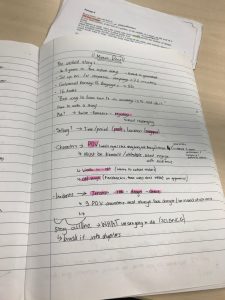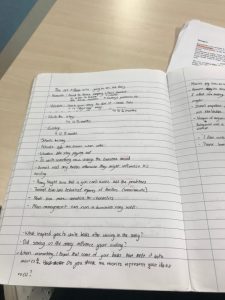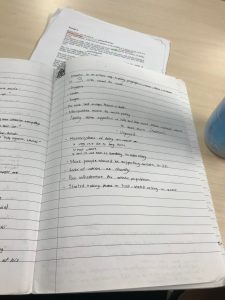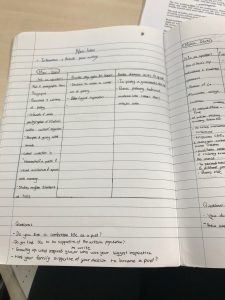Christina Lau is a disabled, mouth-painting artist who gives motivational and inspiring speeches to different groups of people. She suffered a spinal cord injury when she met with an accident in 2005, leaving her paralysed from neck and down. However, instead of letting this disability ruining her life, she used it to discover new aspects of her identity and explore her limits.
One of the many memorable things Lau said was that after her accident, she felt as if she was a baby and had to re-learn how to deal with her new situation and body functions. She said that she couldn’t “do basic things like holding a cup, feeding [herself],” etc. Imagine having to feel as if you don’t know how to do basic things and having to be “a burder to all of [her] family and loved ones.” However, she did explain how she found some satisfaction and joy in going through this struggle, as she got to experience the entire journey all over again.
Something that was very important and dear to Christina was her family. She mentioned multiple times that her family supported her throughout the entire process and provided emotional comfort. Whilst her family didn’t have any idea how to deal with her disability, they all did all they could and encouraged her to stay optomistic. Furthermore, she also elaborated that the accident showed her that she didn’t spend enough time with her family, so this way, she got to learn the comfort, and happiness you get from your family.
When one is faced with trauma or are put in a horrible situation, they lose confidence and can go into depression. Lau talked about how the accident did cause her to go into depression, but not for long. She explained how there is an urge to cry and whine about your circumstance, however, there is no outcome from that. She showed how she tried to become optomistic and gave great advice about being stuck in a situation you never imagined was possible. For example, something she said which stuck with me was, “If you fail, never give up, because F.A.I.L means ‘First Attempt In Learning.’ ”
Recovering from the accident, Lau couldn’t go back to her previous job as a prison guard for obvious reasons. Though this did cause her great dismay, she decided that whining about something she can’t change doesn’t do anything. Instead, she took up new activities like mouth painting and table tennis. Though she never tried to experience other things like painting as she never explored that side of her, after the accident, all of these new hobbies and options became open to her and she decided to pursue a new career.















